#baru
Text


And so the Riversleigh #paleostream concluded! Lots of weird marsupials in this one. Since we chose to depict here a Miocene faunal zone you will not come across your typical Australian megafauna, like Diprotodon and Dromornis, that stuff came later.
We are looking at their ancestors, before the rainforest collapse.
Here some detail shots. Next time we will visit the Kimmeridge clay, a late Jurassic marine ecosystem.


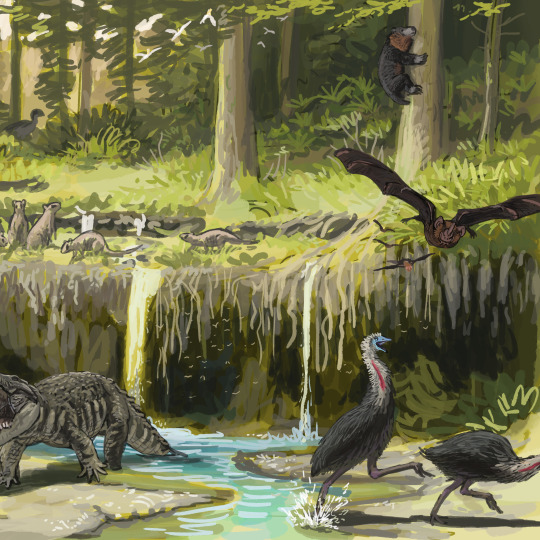
#sciart#paleoart#paleostream#palaeoblr#miocene#baru#crocodile#mekosuchian#marsupial#nimbadon#riversleigh#wakaleo
516 notes
·
View notes
Text
Baru threatening to fuck this man’s secret daughter in a woman-respecting way is so funny. She’s like, I’m going to find your daughter, you old creep. And I’m going to treat her to dinner. We’ll eat blackberries. I’ll flirt with her and show her my boat. And then we’ll see where things go from there.
764 notes
·
View notes
Text
Wikipedia links in lieu of propaganda.
Balbaroo fangaroo, a cenozoic kangaroo with big fangs

Barameda, a carboniferous lobe-finned fish

Barawertornis, a cenozoic dromornithid bird
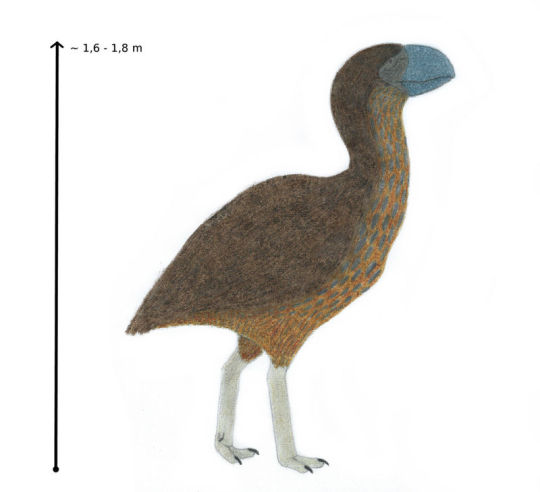
Baru, a massive cenozoic crocodile
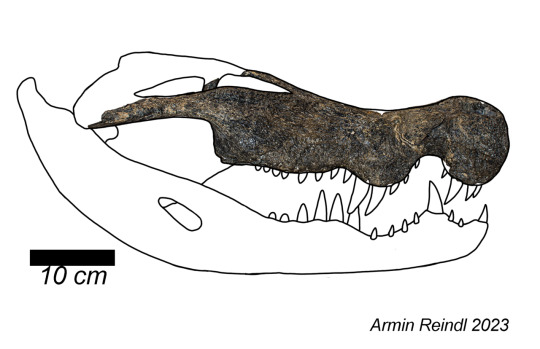
Batrachosuchus, a triassic temnospondyl amphibian

Blinasaurus, a triassic temnospondyl amphibian

Bohra, a cenozoic tree kangaroo

Bothriolepis, a devonian placoderm fish

Burramys brutyi, an extinct species of mountain pygmy possum
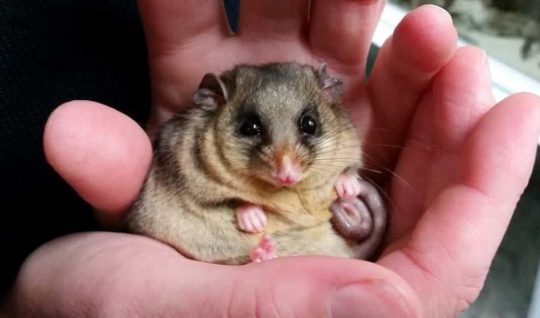
#please reblog#feel free to advocate for your favourite#palaeoblr#australian fossil alphabet thing#balbaroo#fangaroo#barameda#barawertornis#baru#batrachosuchus#blinasaurus#bohra#bothriolepis#burramys#mountain pygmy possum
102 notes
·
View notes
Text
Baru iylwenpeny: The Last Baru
Happy to announce that there's just been a major new publication for mekosuchines. The Alcoota Baru, which I briefly touched upon in my post on the genus, has finally been named.
The new name, Baru iylwenpeny (pronounced eel-OON-bin-yah), derives from the Eastern Anmatyerr dialect (part of the Arrernte language) and means "good at hunting". A name that seems quite fitting when you look at the skull.
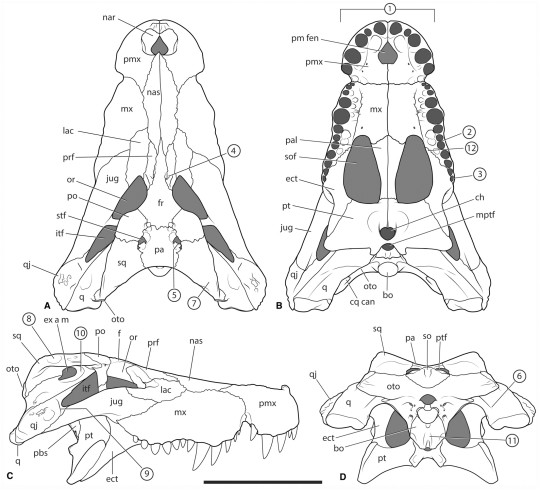
As a reminder, this animal stems from the Alcoota Fossil Site in Australia and dates to the Late Miocene, making it the youngest of the three recognized Baru species.
Previously this species was already referred to as being "the most robust Baru" and they weren't kidding. This thing looks more like something out of the Cretaceous than an animal that lived a mere 8 million years ago.
The morphology is interesting in many ways. Many of the ridges that are so prominent in Baru wickeni and less developed in Baru darrowi are absent. The seventh and eight tooth are so close they theres basically no space. Instead of four teeth like other Baru it has five in each premaxilla and the nasals reach the nares, like in Baru wickeni but unlike in Baru darrowi. The teeth also show the same small serrations as Baru darrowi and, unlike either of the other species, the jaws appear much less wavy not because they are but because the first festoon of the maxilla is followed up by a second one so developed it makes the first look almost flat.
It's a fascinating mosaic of characters that makes its relation to the other species a puzzling question. You'd think that the ridges for instance point at it being derived? After all wouldn't it make sense? Baru wickeni had the most developed rigdes, Baru darrowi smaller ones and Baru iylwenpeny none. Plus, the teeth of Baru wickeni are smooth unlike those of later forms. Yet at the same time....
The fact that it has five teeth instead of four and the fact that the nasals reach the nares are both ancestral traits, so you'd expect it to be closer to the base.
Left: Baru wickeni
Right: Baru darrowi
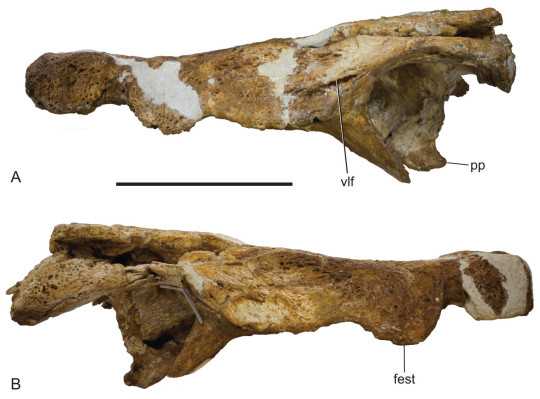
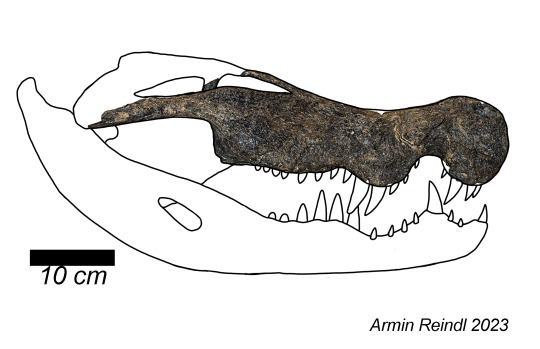
Well, while I think this isn't going to be the final place of this species among Baru, the most recent phylogenetic analysis suggests that Baru iylwenpeny was weirdly enough the basalmost species. Which means that it must have split from the other two species at the latest during the Late Oligocene and outlived the both of them without us ever knowing.
The paper also discusses how these animals may have gone extinct. If you look back at Kalthifrons, you might remember how I mentioned that mekosuchines kinda had a drop in diversity when transitioning from the Miocene to Pliocene. While the new paper avoids calling this a drop in diversity, it does highlight that there certainly was a turnover in fauna.
The reason is an old enemy of mekosuchines. Climate.
Yates and colleagues suggest that Australia was hit by an especially nasty dry period at the end of the Miocene, severe enough to drive Baru to its death but not severe enough to whipe out all mekosuchines. And after Baru was gone, Kalthifrons and Paludirex moved into the open niche.
There's also a final little piece of information that's not focused on yet really fascinating. Baru iylwenpeny had a friend. At least one other croc lived at the Alcoota site during the Late Miocene and tho it hasn't been studied in full yet, one thing is apparently known. It was a relative to the Bullock Creek taxon that coexisted with Baru darrowi and a relative to "Baru" huberi, the small croc that coexisted with Baru wickeni. This grouping has yet to be given a name, but its fascinating to me that each Baru species seemingly coexisted with a much smaller mekosuchine. Alas, like Baru this lineage seems to have fallen victim to climate change.
Baru wickeni and "Baru" huberi, in truth an unnamed genus.
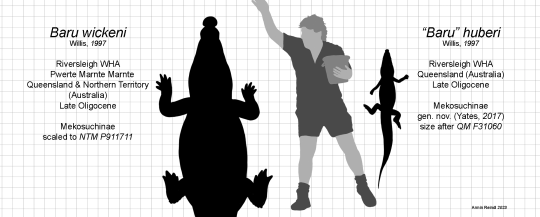
The paper is accessible here for those that wan't to dive deeper into the matter. I'll also be working on an updated size chart, this time featuring all three species of Baru, tho I can already tell you that despite being more robust its surprisingly not that much larger.
The last Baru (Crocodylia, Mekosuchinae): a new species of ‘cleaver‐headed crocodile’ from central Australia and the turnover of crocodylians during the Late Miocene in Australia (wiley.com)
#baru#baru iylwenpeny#alcoota baru#alcoota fossil site#miocene#paleontology#palaeoblr#crocs#crocodile#mekosuchinae#paleontology news#prehistory
95 notes
·
View notes
Text


book 4 cover/title prediction
199 notes
·
View notes
Text
I am once again going insane over Baru feeding Tain Hu to the birds. You think it’s another part of her act at first. “Chop up the meat” sounds callous, dehumanizing. That’s how she wants it to sound. And yet at this point where she has to pretend more than perhaps ever before, where all eyes are on her and testing her, where she feigns utter carelessness about the thing that is breaking her mind in half, she finds a way to honor Tain Hu. She refuses to let Falcrest hold onto any part of her, not as a prisoner and not as a body. Tain Hu returns to the world in the tradition of Baru’s ancestors, picked up by the birds which are a metaphor for Baru herself and carried away and out of Falcrest’s reach, because no one can conquer Tain Hu, not in life and not in death.
372 notes
·
View notes
Text
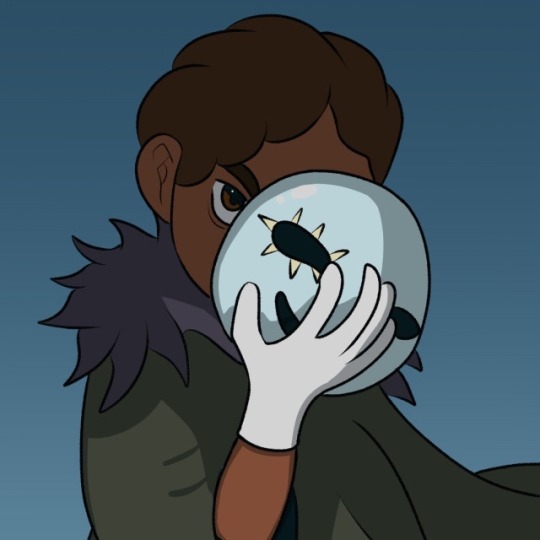
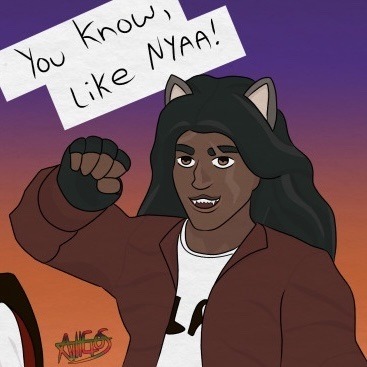
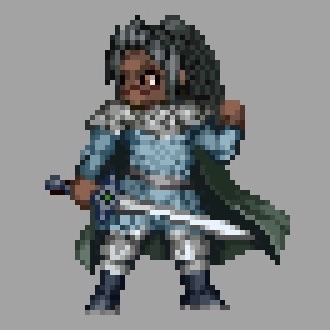




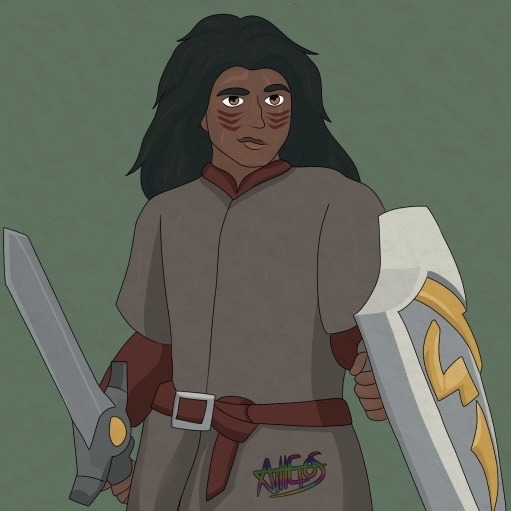

Art Vs Artist 2023
Hoping to keep improving next year!
21 notes
·
View notes
Text
I wonder if sometime during the events of The Tyrant Baru Cormorant or beyond if Aminata and Baru got to have a “Wait...you slept with WHO?” conversation where there is some mutual judgement of each other’s choice of hook-ups.
#Aminata#Baru#and their uh... questionable choices#sadly despite his general rancidness the series does not let us forget that Heyschast is canonically attractive to many people#Heyschast#Shao Lune#The Masquerade Series#Baru Cormorant#The Tyrant Baru Cormorant
64 notes
·
View notes
Text



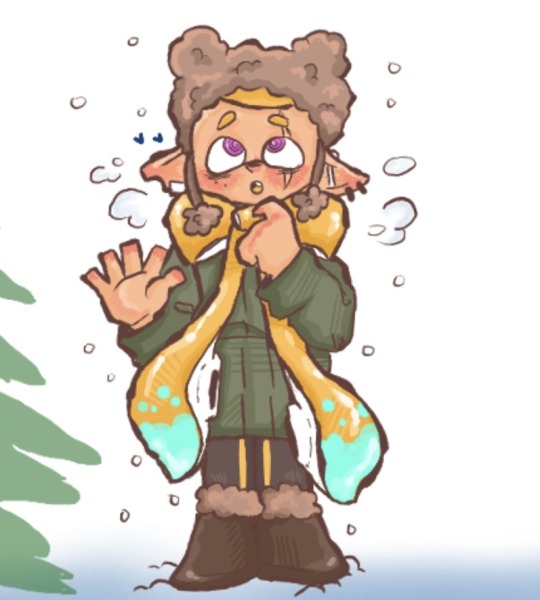

baru beloved 💛
14 notes
·
View notes
Text
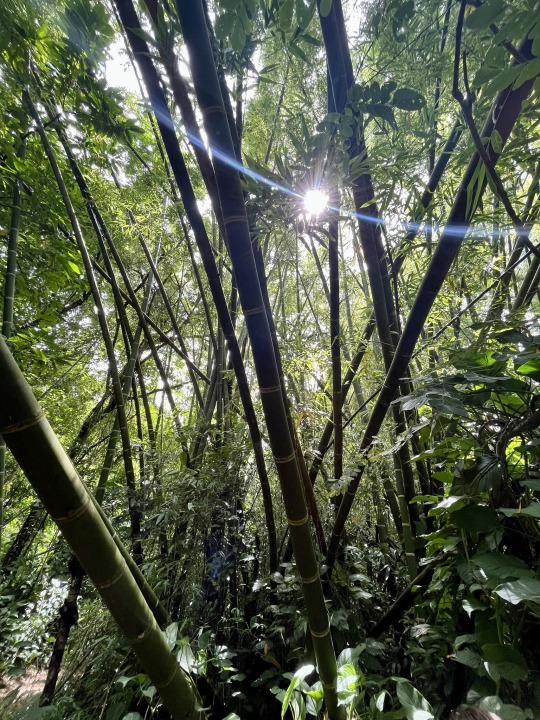
Morning walk with bamboo.
Costa Rica, 2023.
#photographers on tumblr#original photographers#street photography#street#black and white#travel#colors#bamboo#costa rica#hacienda#baru#osa#pacific coast#Domenicalito
19 notes
·
View notes
Text
Farrier selecting girls to be his protégées is because he has daughter issues, but the reason he’s getting lesbians every time is…
On purpose: His second priority is always to disprove eugenics by conditioning gay people into fearing homosexuality. Plus, it gives him an angle of manipulation. His gaydar is THAT good that he knows which six-year-olds are going to be homos. Characterization result: He’s even more sinister.
Pure coincidence: These girls are just gay because some women are gay. It’s statistically improbable that all his protégées are lesbians, but not impossible. Characterization result: He’s a new type of guy who hates four leaf clovers but keeps picking them every time.
Reverse baby-Bechdel effect: These girls stand out from their peers for some reason he can’t explain and he keeps assuming they’re different because they’re smarter. He wants to teach the smart ones, but it turns out they’re just lesbians. Characterization result: He’s stepping onto a rake and getting smacked in the face over and over.
182 notes
·
View notes
Text

Not sure if I’m gonna be able to get myself to finish this bc I’ve been in a bad art spot recently, so here take the wip at least
#a golden brushstroke#iscend comprine#can’t even call her a poor lil meow meow bc her atrocities are too great#but fuck me I cannot help but care her#iscend#baru cormorant#baru#clarified
35 notes
·
View notes
Text
Baru: The Cleaver-Headed Crocodile
Ok back on my croc stuff, today discussing Baru. Like most the other crocs I've been talking about, Baru was a mekosuchine, a member of an endemic radiation of crocodilian native to Australasia.
Baru is easily among the largest of this group and among the most robust, with massive curved teeth and almost inflated looking jaws.
Left my interpretation of Baru darrowi, right the illustration by Willis et al. from 1990.
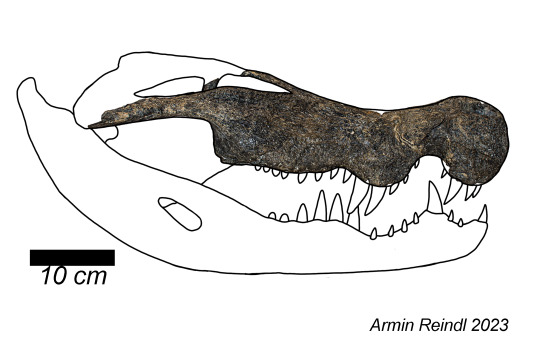

My reconstruction differs subtly in some regards, obviously the jaw material shown is from Ristevski et al. 2023 and elements of the posterior skull are based on the older Baru wickeni. My mandible also turned out slightly different, tho the quality of the images in the original description is not great so that is not guaranteed.
Anyhow, this head likely sat atop the body of what was a decently large crocodilian, with estimates suggesting four or even five meters in length for both currently recognized species Baru wickeni and Baru darrowi. As you can see below, I went for the lower estimate (which is the one given by proper publications), which still renders an immense animal all things considered, certainly holding up with many crocs of today.

Currently, there's two recognized species, one unnamed species and one that has been reassigned. The older of the named species is Baru wickeni, which was found in the Lake Eyre Basin and Riversleigh World Heritage Area during the late Oligocene. Like I already said, it was approximately as large and robust as the later Baru darrowi, but did differ in some regards. The skull had much more prominent crests, the nasal bone extended into the opening for the nares and importantly, the cutting edges of the teeth were smooth.
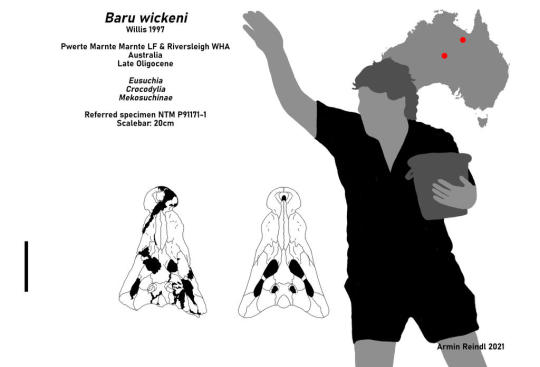
During the Miocene, Baru wickeni would be replaced by Baru darrowi, known from younger strata of the Riversleigh and the Bullock Creek fauna. Baru darrowi had less prominent crests, but in turn slight serrations on its teeth. Also the nasal bones did not extend into the nares. Baru darrowi is the species shown at the start.
The other two are then the unnamed Baru species from the Alcoota fossil site and "Baru" huberi. I talked about the latter before and how it is now thought to be something else entirely. Which leaves us with the Alcoota form. Generally regarded as a distinct species, fossils of the Alcoota Baru have been found from 2000 onwards near Alice Springs and appear to represent an animal more robust than the other known Baru. Below you can see a skeletal mount on exhibition at the Megafauna Central in Alice Springs (image by Aussie Bucket List) and a skull held by Adam Yates, an important researcher of this animal.
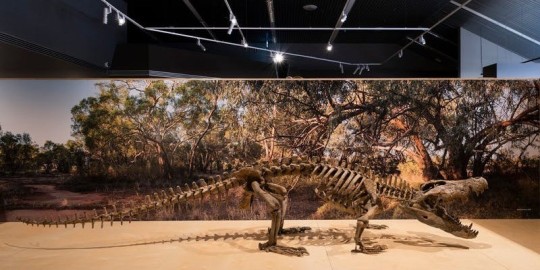
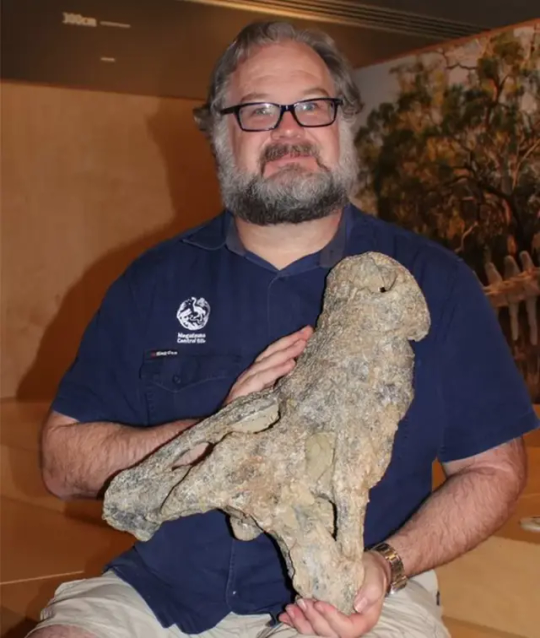
A little side note I want to mention is the name Baru. As you might have guessed from the etymology of various other mekosuchines (Kambara, Mekosuchus, Quinkana, Kalthifrons), the name actually ties into the native People of Australia. Specifically, Baru is a figure in the mythology of the East Arnhem Region, which describes him as a sort of totem crocodile that brought law to the lands he named. Baru also had a fight with Jarkitj (Willy Wagtail) after stealing fire for himself. Sadly I couldn't find much about the mythical Baru beyond a brief summary written up by George Pascoe Gaymarani you can read here.
Returning to the animal, one would suspect that the robust skull meant that it didn't quite hunt like modern crocodiles, especially considering the serrated teeth found in the younger species. Well, tho nothing concrete is known Willis and colleagues speculate that this might have been an adaptation to shallower waters. While modern crocs tend to ambush prey, grab it using a strong bite and conical teeth and then proceed to drown it, Baru may not have had that option. A modern croc can just drag a zebra for instance into deep water, weaken it and let go to adjust its grip without the risk of it getting away. In shallow waters, this may have been too risky and lead to prey escaping. So Baru's robust head and curved, sometimes serrated teeth were built to inflict a lot of damage upon prey when lunging, securing the bite and incapacitating it. Willis estimates that it may have taken prey as heavy as 300 kilos.
There's also the interesting tidbit of Baru wickeni coexisting with a diverse croc fauna, yet being conspicuously absent from more southern regions of Australia despite entering the respective drainage basin. I go into more detail while talking about Australosuchus, but the jist of it is that Baru was likely not as cold resistant as Australosuchus and thus not found as far north.
Alas, as with other mekosuchines, not much art of Baru exists aside from this absolutely fantastic piece by @knuppitalism-with-ue
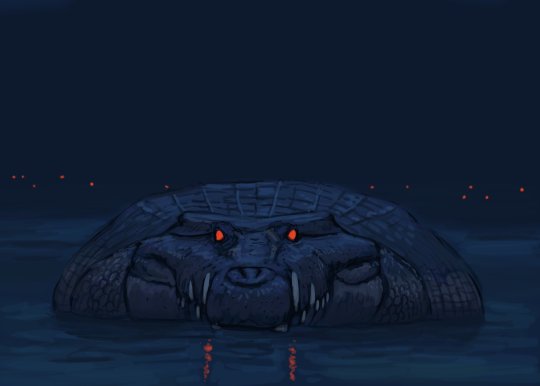
As per usual, this deep dive is brought to you as part of me redoing the wikipedia page of this genus, which resulted in a major size increase. The image below is just to show the difference, but if you want to read it here's the link: Baru - Wikipedia
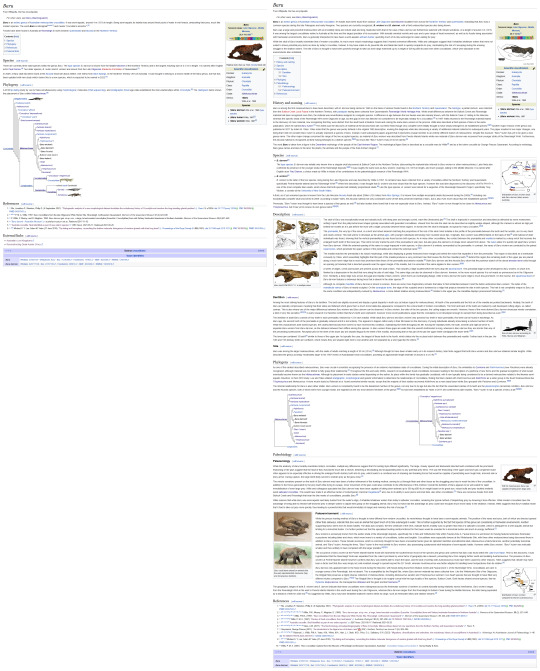
#mekosuchinae#wikipedia editing#wikipedia#baru#baru wickeni#baru darrowi#baru huberi#croc#crocodile#paleontology#palaeoblr#prehistory#oligocene#miocene#australia#long post
115 notes
·
View notes
Text

74 notes
·
View notes
Text
Gotta love Baru’s stupid little words of wisdom like... When things break underfoot, you know you are going forward. Babygirl what does that even mean. Is it working? Are you successful convincing yourself that the suffering you inflict has a purpose?
110 notes
·
View notes
Text

Triangle Strategy x Baru Cormorant
Baru time!
Unit info below the cut
Max stats:
HP: 501
Strength: 24
Physical Defense: 32
Magic Attack: 58
Magic Defense: 48
Luck: 40
Accuracy: 43
Speed: 26
Evasion: 35
Jump: 2
Movement: 4
Class Progression: Tactician -> Cryptarch
Weapon: Aminata's Saber
Skills:
Inciting Whispers: Chance to tempt an enemy to your side for 2 turns
Golden Opportunity: Throw your money at enemies to deal damage and tempt them to your side for 2 turns
War Cry: Increases the strength and defense of all adjacent allies for 2 turns
Now...!: Moves an ally's turn to directly after your own
Final Gambit: Use up all of your TP to deal a devastating non-elemental magic attack; strength varies depending on amount of TP consumed
In Due Course: Deal non-elemental magic damage to an enemy and all adjacent enemies once one turn passes
Tulpa Takeover: Deal physical damage using your magic attack in place of your strength; Can only be used once per battle.
#ash.art#pixel art#triangle strategy#baru cormorant#traitor baru cormorant#seth dickinson#the masquerade#baru
12 notes
·
View notes